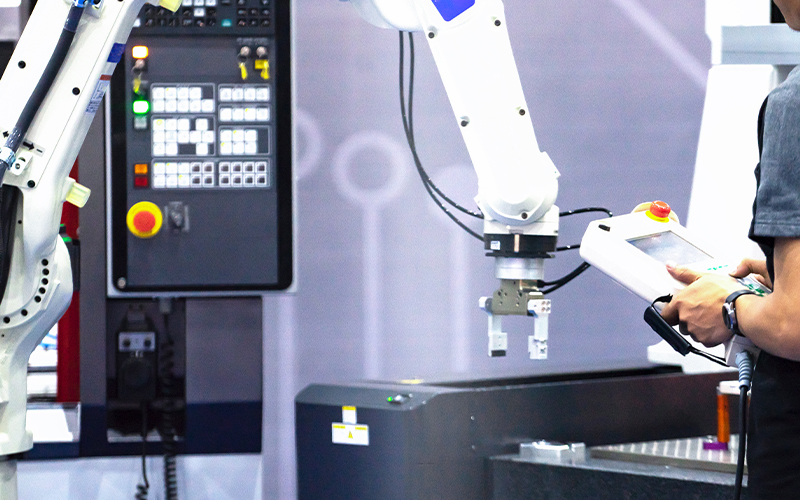Robotic Process Automation
Thinking ahead: Top five RPA use cases in insurance
Millions of people buy various insurance policies every day. Especially after the COVID-19 pandemic, people have realised the value of insurance plans and contactless digital operations. A simple online search shows myriad policies offering maximum benefits at relatively low premium rates. Although digitisation is not new to the insurance industry, the traditional branch-led model is still in play. Even with larger insurance companies, the end-to-end insurance process is tedious, requiring substantial documentation and physical interaction between the insurer and the insured.
On the flip side, insurers are grappling with the realities of a highly competitive market, unprecedented sales volumes, and escalating costs. To meet this demand, they need to cut operational costs heavily, reduce turnaround times (TATs), minimise errors, and improve customer service. Deploying RPA in insurance is the only way to address this challenge and gain competitive advantage. This is the right time for insurers to identify manual-intensive, high-volume processes and automate them with RPA tools.
RPA in insurance
RPA in the insurance industry refers to using software bots to take over rule-based tasks and SOPs that require no strategising or decision-making, including repetitive or tedious manual jobs such as data entry, report generation, and document updation. That leaves employees free to focus on tasks that demand emotional intelligence, reasoning, and ingenuity. RPA, along with artificial intelligence (AI) and natural language programming (NLP), is perfect for a distributed workforce and remote operations. RPA in the insurance industry can perform the following functions:
- Copy and paste data between applications
- Extract relevant data from emails and other documents and move it to a core system
- Integrate back-end and front-end processes
- Integrate with existing legacy systems and rules engines to automate entire workflows
The banking and finance sectors have already embraced automation on a large scale. It is high time insurers avail of the benefits of RPA in insurance.
RPA use cases in insurance
There are multiple benefits of RPA in insurance. With RPA use cases in insurance, businesses can scale new heights, make room for innovation, and enhance their customer experience. Here are the top five RPA use cases in insurance.
- Claims management
- Underwriting
- Policy servicing and administration
- Navigate across data silos
- Read the context of emails and classify content
- Automate updates
- Handle cancellations or renewals
- Identify discrepancies across systems to detect duplicates or fraud
- Regulatory compliance
- Customer data validations
- Compliance report generation
- Security operations
- Account closure notification
- Scalability and product innovation
Claims processing is at the heart of the insurance industry. This is where insurance companies set standards and build credibility. In traditional set-ups, this is a labour-intensive process where employees collate data from various sources and validate and authenticate the data.
Most insurance companies already implement some level of automation, be it as basic as scanning documents or as advanced as automating certain workflows. However, they still rely on human intervention to process and navigate the data between systems. Besides adding to the costs, this also increases the possibility of error, leading to a poor customer experience.
Here, RPA provides an end-to-end automated solution, eliminating the need for human input. It integrates seamlessly with all applications and systems, including legacy systems, and takes over labour-intensive tasks such as error tracing, claim verification, and data extraction from multiple sources such as forms, emails, and bank statements.
An underwriter’s goal is to assess risk and determine the coverage amount and premiums for an individual or a business. The process involves gathering data from various sources to evaluate the magnitude of the risk before issuing a policy. This process is time-consuming and error prone when it’s performed manually.
RPA can gather and process data from multiple sources accurately and at a much faster pace. It automates risk analysis, pricing, and coverage amount as well as provides greater visibility into flagged concerns. This means minimal paperwork, perfect accuracy, and faster response times.
Policy administration comprises a plethora of tasks throughout the policy life cycle to ensure that the customers get a seamless experience. It typically involves front-end functions such as quoting, rating, issuance, updating details, renewals, and claims verification.
All administrative tasks — whether minor ones such as an address change or major ones such as policy transfer — involve processing and updating disparate data sets and systems. Since various teams and stakeholders are involved in the process, it can lead to inefficiencies, miscommunication, and delayed TATs. In such a scenario, RPA bots can:
This helps to remove operational roadblocks and lets employees concentrate on scaling the business and taking better customer service initiatives. Automating data entry and collection at various points in the policy life cycle also creates opportunities for upselling and cross-selling.
Insurance companies must abide by numerous regulatory laws and guidelines, such as HIPAA privacy rules, PCI standards, tax laws, etc. Failure to comply leads to hefty fines and penalties. Moreover, these rules and regulations are constantly being updated or revised, so adhering to them is challenging for insurers. RPA software simplifies regulatory compliance since it is rules based. Also, regulatory changes made in one place reflect across all the operations. This eliminates the need to make manual changes to different systems. RPA in the insurance industry can also automate processes such as:
Insurance sales have grown exponentially, and so have the customers’ expectations of personalised services and tailored experiences. There is a greater need for businesses to upscale and design novel products. However, manual processes cause delays and bottlenecks, leaving no space for expansion or innovation.
RPA bots can automate entire workflows by integrating data from disparate systems at the business process level. This enables seamless information sharing, better coordination, and enhanced workflow efficiency. For the insurer, this means greater scalability and scope for product innovation. Forward-thinking businesses have already launched new products and services with RPA in the insurance industry, such as policy management apps, on-demand quotes, and interactive customer portals.
For organisations on the digital transformation journey, agility is key in responding to a rapidly changing technology and business landscape. Now more than ever, it is crucial to deliver and exceed organisational expectations with a robust digital mindset backed by innovation. Enabling businesses to sense, learn, respond, and evolve like living organisms will be imperative for business excellence. A comprehensive yet modular suite of services is doing precisely that. Equipping organisations with intuitive decision-making automatically at scale, actionable insights based on real-time solutions, anytime/anywhere experience, and in-depth data visibility across functions leading to hyper-productivity, Live Enterprise is building connected organisations that are innovating collaboratively for the future.
How Infosys BPM can help?
With RPA software, you can build intelligent processes and drive productivity like never before. Find out how you can transform your business with Robotic Process Automation at Infosys BPM.






